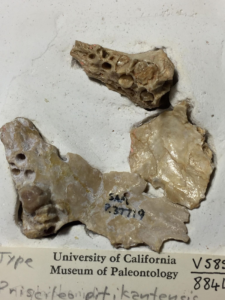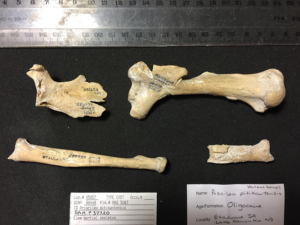View the radius and scapula of Wakaleo pitikantensis.
Rauscher, B. (1987). Priscileo pitikantensis, a new genus and species of thylacoleonid marsupial (Marsupialia: Thylacoleonidae) from the Miocene Etadunna Formation, South Australia. Possums and Opossums: Studies in Evolution. Surrey Beatty & Sons and the Royal Zoological Society of New South Wales, Sydney, New South Wales, Australia, 423-432.
Gillespie, A. K., Archer, M., Hand, S. J., & Black, K. H. (2014). New material referable to Wakaleo (Marsupialia: Thylacoleonidae) from the Riversleigh World Heritage Area, northwestern Queensland: revising species boundaries and distributions in Oligo/Miocene marsupial lions. Alcheringa: An Australasian Journal of Palaeontology, 38(4), 513-527.
Gillespie, A. K., Archer, M., & Hand, S. J. (2019). A new Oligo–Miocene marsupial lion from Australia and revision of the family Thylacoleonidae. Journal of Systematic Palaeontology, 17(1), 59-89.

